
Overview and Facts
Hemophilia is a genetic disorder in which the body is not able to form blood clot, a clump of blood required to stop bleeding. So, when a person suffers bruises or injuries, he/she bleeds for a longer duration as clot is not formed. There is an increased risk of bleeding in the joints or brain. Thus, hemophilia leads to excessive or abnormal bleeding. People with this condition experience oozing after surgery, injury and having a tooth pulled. In severe cases, there can be sudden bleeding even the absence of an injury. There can be complications due to bleeding in joints, muscles, brain or other internal organs. Internal bleeding in joints results in swelling and pain. It can cause increased problems if not treated timely.
Blood contains proteins called clotting factors which help to form blood clot. People with hemophilia have low levels of factor VIII or factor IX. The severity of hemophilia depends on the amount of these blood factors in blood. Less amount of factor implies greater likelihood of bleeding which does not stop resulting in severe health conditions.
Hemophilia, being a genetic disease, can be passed on from one generation another. In one-third of the cases, there is no previous history of the condition in the family. Genetic mutation leading to hemophilia is passed on from parent to the child through generations. Men having hemophilia will pass on the gene to their daughters and not their sons. Women with hemophilia will pass the gene to their daughters and sons. In women it can even lead to bleeding problems.
Hemophilia A is found in 1 out of 5000 male births. Hemophilia A is four times more common than hemophilia B. In the U.S., around 20,000 individuals suffer from hemophilia. Approximately 4 Lakh people have hemophilia worldwide. More than 75% of people having hemophilia, do not receive adequate treatment. There are some treatments available in the U.S. which require use of expensive medicines that are manufactured from human plasma. In the 1980s, around 90% of people in the U.S. with severe hemophilia were infected with AIDS when proper screening of blood and plasma donations for HIV was not done.
Types of and Symptoms of Hemophilia
Types of Hemophilia:
- Hemophilia A: It happens due to lack of clotting factor VIII (8) in the blood. Around 1 in 5000 babies are born with hemophilia A.
- Hemophilia B: It occurs due to lack of clotting factor IX (9). It is not common as compared to hemophilia A and affects 1 out of 30,000 babies.
- Hemophilia C: Its occurs due to insufficient clotting factor XI (11) and has mild symptoms.
Though serious forms of hemophilia generally affect males, it can also occur in females. In some cases, a person may get affected with a type that is not there in the family. This is known as acquired hemophilia. It affects both females and males.
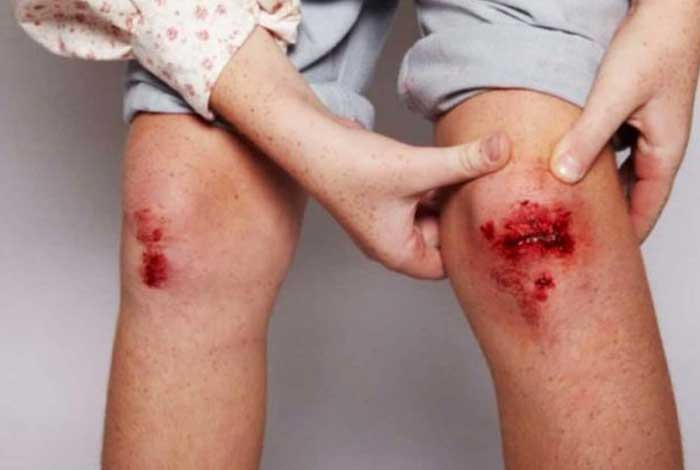
Symptoms of Hemophilia:
The following are some symptoms of hemophilia:
- Abnormal and continuous bleeding after an injury or surgery Bleeding in a joint or muscle that causes pain and swelling
- Bleeding from the nose quite often
- Easy bruising
- Large and deep bruises
- Blood in stool and urine
- Bleeding after teeth gets pulled out or some other dental work happens
- Abnormal bleeding following vaccinations
In Infants the following symptoms may be noticed:
- After getting a routine vitamin K shot, the baby may show bleeding in the muscle that causes a bruise
- Pricking infant’s heel during blood tests may lead to bleeding for a longe time
- After circumcision, bleeding occurs which continues for a long time
- Bleeding in brain after a difficult delivery
- Emergency signs for hemophilia are:
- Pain and swelling in joints like knees, elbows, shoulders, etc.
- Headache which is painful and extended over long period of time.
- Repeated vomiting
- Pain in neck
- Double vision
- Fatigue

Risk Factors for Hemophilia
- Hemophilia is a disorder which is inherited. It is passed on from the parents to children. Hemophilia occurs because of mutations in the genes that encode clotting factors VIII, IX, XI. Because of these alterations, clots do not form as expected and bleeding continues without stopping.
- Being a male increases your chances of having hemophilia. This is because they receive only one copy of X chromosomes from their mother. One defective X chromosome is enough for the development of hemophilia.
- If the age is 60 years or above, there are greater chances of developing hemophilia.
- Autoimmune disorders, diabetes, hepatitis, pregnancy, etc. all increases the chance of developing hemophilia.
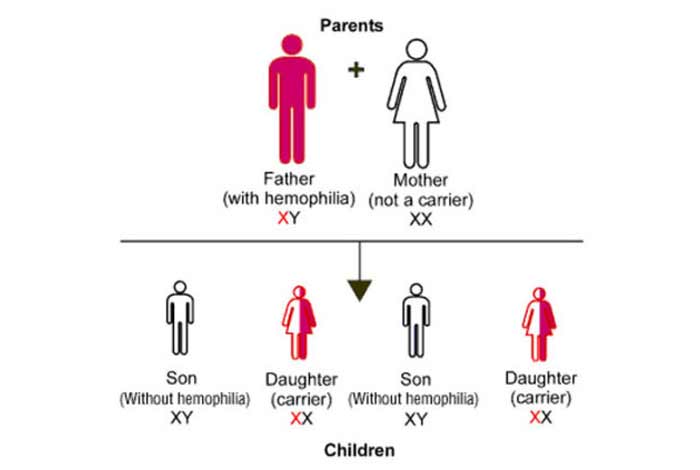
Do I Have Hemophilia?
Hemophilia results in spontaneous bleeding in the joints, muscles and tissues after surgery or injury. These lifelong bleeding problems are related to the levels of clotting factor present in a person. Von Willebrand disease results from the deficiency of von Willebrand factor (vWF), a protein that helps in blood clotting. Symptoms are nose bleeding, bleeding gums, bleeding after dental surgery. The main difference is that there is no internal bleeding in joints or other internal organs in von Willebrand disease, whereas it occurs in hemophilia.
- Von Willebrand factor mainly affects skin and mucous membranes, so its deficiency leads to bleeding in the mouth, intestines, lining of nose, etc.
- Factors VIII and IX play an important role in deep tissues, so hemophilia causes bleeding in joints and muscles.
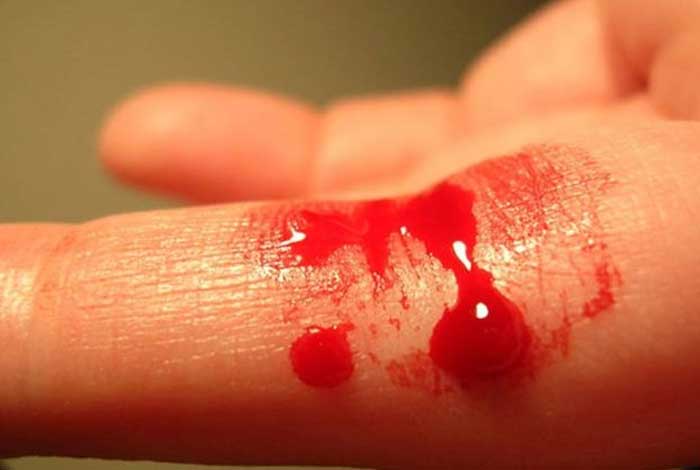
Causes and Prevention of Hemophilia
Causes of Hemophilia:
In order to stop bleeding, blood platelets coagulate and come together at the wound site to form a clot. This process is known as coagulation cascade. Presence of low levels of clotting factors or complete absence of them causes continuation of bleeding.
Hemophilia is a XMillefolium:-linked disease. It is passed on from parents to children. If the mother is a carrier, i.e. out of two sex chromosomes, she has one normal X chromosome and one carrier (muted)X chromosome. The father also has two sex chromosomes, one X and one Y chromosome. If the female gets normal X chromosome from the father and altered chromosome from the mother, the normal chromosome counterbalances the effect of the carrier chromosome and female does not inherit the disease. However, if male receives Y chromosome from the father and altered X chromosome from the carrier mother, then the male will inherit the disease. However, there are 50% chances of not inheriting the disease when Y chromosome of father is paired with the normal X chromosome of mother.
About 30% of patients having hemophilia do not have a history of the disease in the family, and it occurs due to spontaneous mutations at any stage of life.
Prevention of Hemophilia:
Hemophilia is a genetic disorder that is difficult to prevent. Those having a family history of the disease can consult a doctor for diagnostic tests for their children and themselves.
However, people with hemophilia should take some precautions like:
- They must avoid aspirin and nonsteroidal anti-inflammatory drugs (NSAIDs).
- They must get vaccinated against hepatitis B virus.
- Administer factors VIII and IX regularly for prevention of bleeding and damage of joints
- Not circumcising male infants unless they have been tested positive for hemophilia
- Try to prevent injuries and accidents

Diagnosis and Tests for Hemophilia
Screening tests may be conducted to know if the blood is clotting properly. If a doctor suspects hemophilia, he/she will do some basic lab tests. They will take the blood sample and measure the levels of factor VIII and factor IX in blood. Factor VIII is a protein lacking in patients with hemophilia A and factor IX is a protein lacking in hemophilia B patients. Some screening test are mentioned below:
- Complete Blood Count (CBC): If a person has hemophilia, he or she may suffer heavy bleeding for a long time which can decrease the levels of hemoglobin and RBCs go.
- Activated Partial Thromboplastin Time Test (APTT): This test measures how long it takes for the blood to clot. If the levels of the clotting factors are low, it takes longer time for the blood to clot. In case of hemophilia, the test results will show longer clotting time.
- Prothrombin Time Test: This test evaluates the time it takes for the blood to clot. It measures the ability of clotting of factors I, II, V, VII, X to form clot. If the amounts of these factors are low, it takes longer than normal for the blood to form a clot. The results of this test will not be normal for patients with hemophilia A or hemophilia B.
- Fibrinogen Test: This test measures the levels of blood protein fibrinogen which helps in the formation of clot. This test is ordered in cases of abnormal APTT test.
- Clotting Factor Tests: These are also called factor assays. This blood test shows the type of hemophilia and its intensity. Depending on the levels of clotting factors VIII and IX, these are classified as mild, moderate or severe. For normal people without hemophilia, the level of clotting factor is between 50-100%. In people with mild hemophilia, the level is between 5-50%. In moderate cases, it is between 1-5% and in severe cases, it is less than 1%.
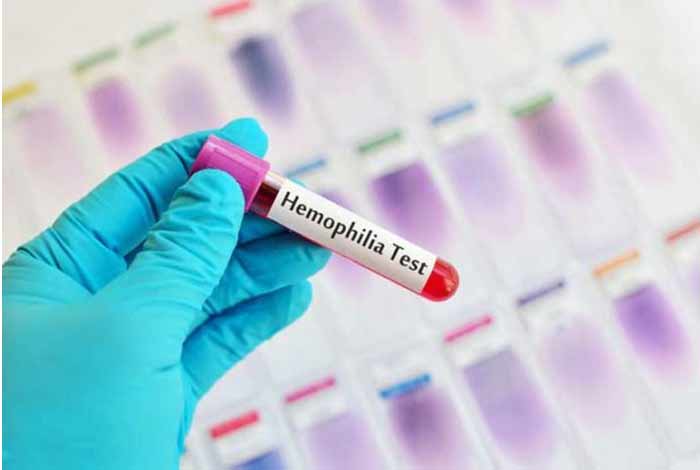
Treatment and Care for Hemophilia
Treatment of Hemophilia:
Replacement Therapy: The main line of treatment is factor replacement therapy. This therapy replaces the clotting factor in blood if it not sufficient for clot formation. Replacing clotting factor many times a week reduces the risk of bleeding. If internal bleeding has led to damage of joints, physical therapy or joint replacement therapy may work.
The common infusion techniques are:
- Prophylaxis: Infusions is done once or for than a week to prevent bleeding. Most of the times children with hemophilia are given this treatment to stop bleeding for the first time.
- On demand therapy: In order to control bleeding, infusions are given as soon as possible. People with mild to moderate hemophilia can be treated with on demand therapy when bleeding cannot be controlled just by applying pressure to the wound.
Drug Therapy: Your doctor may prescribe the following:
- Topical medicines to keep bleeding in check
- The drug Desmopressin (DDAVP) is used in mild hemophilia A for increasing the levels of clotting factor
- Pain relievers other than aspirin and NSAIDs, as these decrease the ability of blood to form clots
- Somatic gene cell therapy in which genes responsible for the formation of clotting factors are inserted into somatic cell. These cells are then injected to the infected person.
Recombinant Factor Concentrates: These are used to treat hemophilia. and are produced using hamster cells. These are extracted from animal cells, so these do not contain human viruses. In some of the concentrates, human albumin is used as a stabilizer while in others sucrose is used as a stabilizer.
Cryoprecipitate: It is extracted from blood and contains high concentration of clotting factor VIII. It is effective in muscle and joint bleeding. Its storage is difficult, and it is more prone to viral contamination.
Fresh Frozen Plasma: In this, red cells are removed from blood. This leaves behind clotting factor VIII and IX. It is not so much effective, as factor VIII is less concentrated. In some countries, it is the only product available for the treatment of hemophilia A and B.
Clots Preserving Medications: These are known as antifibrinolytics which prevent breakdown of clots.
Fibrin Sealants: These are used for direct application to the site of the wound. These promote clotting and hence wound healing. These are used generally where dental work is involved.
Physical Therapy: Physical therapy can be used if damage has been caused to the joints by internal bleeding. Surgery is required if damage has been caused.
First Aid for Minor Cuts: In case of minor cuts, bandage can be used to stop bleeding. Ice pack can be used for bleeding under the skin.
Vaccinations: In hemophilia, it is advised to have vaccinations for hepatitis A and hepatitis B.
The type of hemophilia decides which therapy must be used:
- Mild Hemophilia A: Injection of hormone desmopressin in the vein will release more of clotting factor to stop bleeding. It is sometimes given as a nasal medication.
- Hemophilia B or moderate to severe Hemophilia A: Bleeding stops only after infusing a recombinant clotting factor or one derived from human blood. Infusions must be repeated if the bleeding is intense.
- Hemophilia C: This condition occurs due to low levels of clotting factor XI. This is more common the European countries. In the U.S., plasma infusions are preferred to stop bleeding.
Caring during Hemophilia
What best you can do is maintain a positive attitude and provide a kind of surrounding that has least chances of giving an injury. If you are dealing with children, make them wear a medical alert bracelet so that when you are not around, other people may become aware of their condition. Educate your child about the disease if he has developed this condition so that they are more careful while playing. Ensure that you have enough clotting factor at home so that when need arises, you can inject the clotting factor into the blood stream without causing much delay. One should visit medical care clinic if he or she has developed this condition. Medical guidance works a lot in hemophilia.
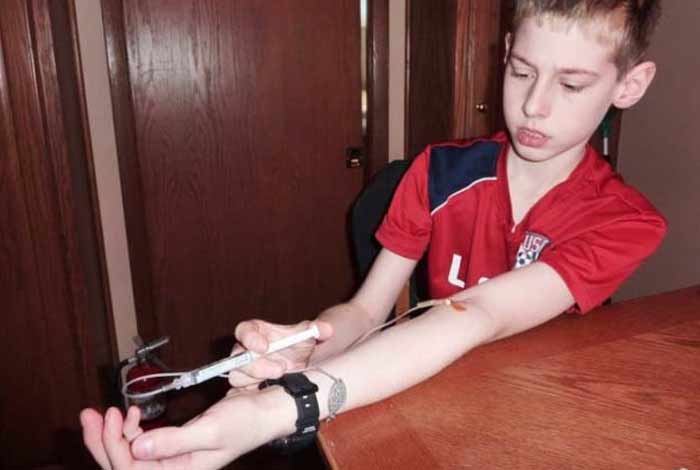
OTC Medication and Self-Management Methods for Hemophilia
OTC Medication for Hemophilia
Hemophilia must be managed by a health care professional. There are no over-the-counter medications available for this condition. It must be made sure that OTC medication should not be taken without the supervision of pharmacist or a doctor. Common drugs like aspirin and NSAIDs should be avoided as they can cause bleeding.
Self-Management for Hemophilia
You may have to train yourself for self-infusion. With time you will gain more confidence to take care of yourself. Start involving yourself in activities such as taking products out of fridge, making or mixing your product, knowing the names of products and supplies, etc. You will gradually become more comfortable with injecting blood factor in your veins.

Natural Ways to Cure Hemophilia
Self-Hypnosis: Studies have shown that those people who use this technique do not need much products for infusion in comparison to those who do not practice self-hypnosis. This method helps blood clot better and reduces the risk of injecting products.
Nutrition: One must avoid vitamin E and fish oil supplements if one has hemophilia. Ensure a diet rich in vitamin K as it is responsible for clotting.
Herbs: Herbs should be taken only under medical supervision. Some herbs that can be taken for the treatment are ginkgo, garlic, ginseng, ginger, turmeric, etc.
Homeopathy: Some homeopathic medicines mentioned below can be taken in hemophilia:
- Arnica: It is used for external and internal bleeding after an injury. It is quite useful in patients who have suffered shock or trauma.
- Crotalus horridus: This medicine is prepared from the venom of the rattle snake and used when bleeding happens in the muscle. It is used when blooding is slow, and the blood appears thin and dark.
- Hamamelis: This is used when there is bleeding due to a cut or wound, or in case of nose bleeding, hemorrhoids or damage of blood vessels in the eye.
- Millefolium: It is used in internal and external bleeding with poor clotting
Phosphorus is useful in cases of heavy and frequent bleeding.

Health Tip by Experts
Hemophilia patients should avoid taking some medicines that help in blood thinning, such as heparin and warfarin. Also, they must avoid OTC medications like aspirin. For pain relief, acetaminophen can be taken.




